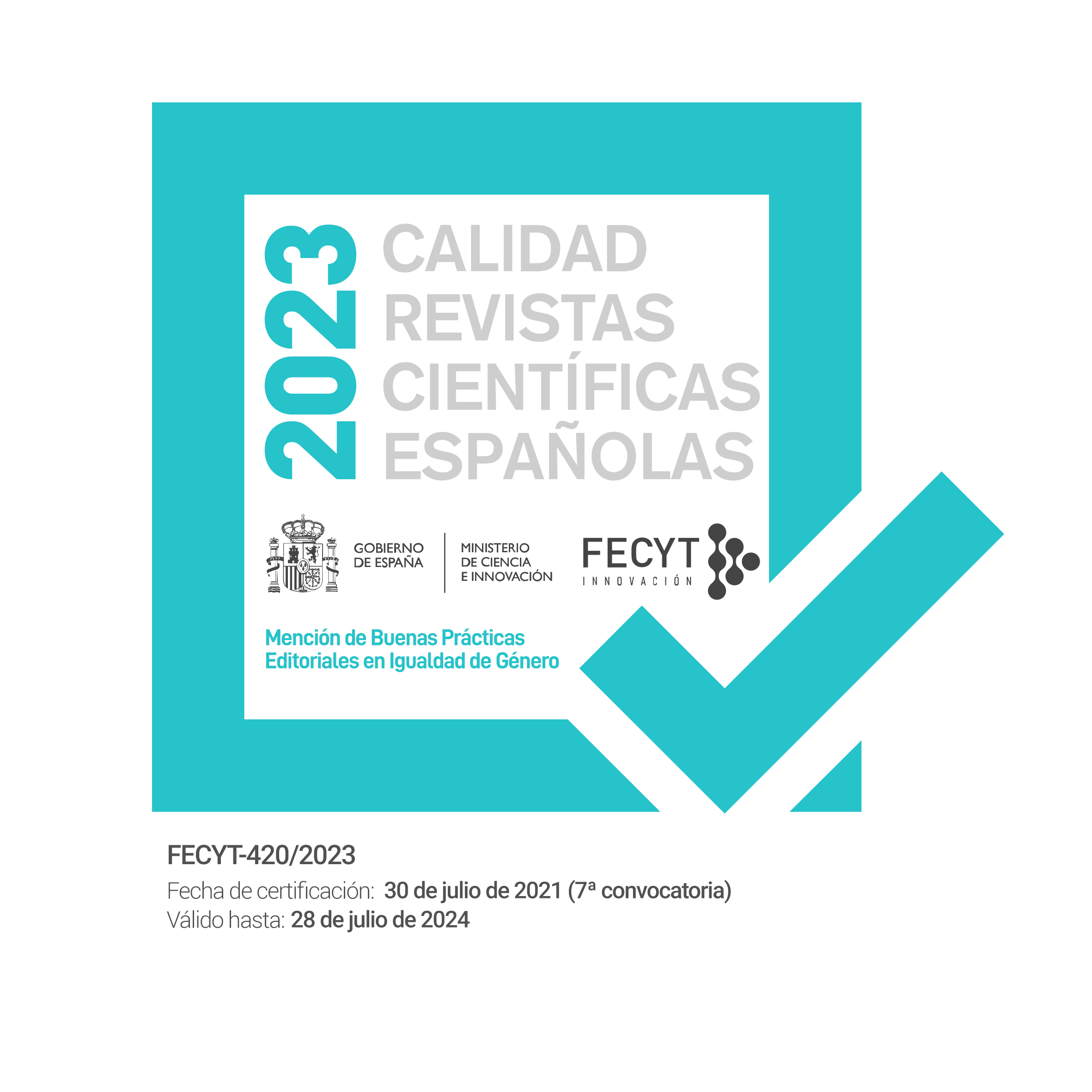Submissions
Submission Preparation Checklist
As part of the submission process, authors are required to check off their submission's compliance with all of the following items, and submissions may be returned to authors that do not adhere to these guidelines.-
The submission has not been published before and it has not been simultaneously sent to another journal (in which case, there an explanation will appear in “Comments to the Editor.”)
-
Submission file formats: Microsoft Word, RTF, or WordPerfect.
-
Format guidelines: Arial, 12pt, single spacing, no tabs, top and bottom margins at 2.5cm, left and right at 3 cm. All images, figures and tables should be inserted in their intended place and not at the end of the text.
-
The text fulfills the required style and bibliographical format established in “Guidelines for authors.”
- Whenever appropriate, it is provided information on whether the research data takes into consideration sex, with the aim of allowing the identification of possible differences.
Copyright Notice
All contents published in the journal are protected under a Creative Commons BY-NC-ND license. This corresponds to legislation within Spain and does not allow commercial use of the texts. It is not possible to modify the contents either.
Every person has free access to the contents of the journal as long as they understand and assume that no profit is to be made on other people’s work.
In all cases, the original source name of the online journal and the article must be mentioned when used for any purposes.
Access to the Contents and Copyright
Authors retain ownership of the copyright in this article, and grant 452ºF. Revista de Teoría de la Literatura y Literatura Comparada the rights of distribution. The work will be available under a Creative Commons BY-NC-ND license, by which the article must be credited to the Author and the journal be credited as first place of publication.
Authors are free to enter in separate, additional contractual agreements for the non-exclusive distribution of the work as published in this journal.
Authors are encouraged to post their work online (eg in institutional or subject repositories, or on their website), as it can lead to productive exchanges as well as to greater citation of the published work
Basic Conditions of all Call for Papers
1. The author accepts that sending the paper:
a. Does not guarantee the publication of it.
b. Is done in accordance to the style-sheet of the magazine and the requirements of the specific call for papers.
c. Implies the non-exclusive transferring of the first publication rights of the paper, as long as it is selected to be published in the journal, to theAsociación Cultural 452ºF, under a Creative Commons BY-NC-ND license.
2. The journal 452ºF, in due respect to moral rights of a copyright, guarantees that:
a. All papers will be evaluated according to the procedure already mentioned.
b. All authors will receive either a positive or negative answer to their sending a paper for publication.
c. All papers will be published unabridged. The journal might make changes in the typographical disposition according to the needs.
d. All papers will be published under a Creative Commons BY-NC-ND license.
Privacy Statement
Body responsible | Office of the General Secretary of the University of Barcelona |
Objective | If you register as an author or reviewer, the objective will be to organize the completion of the different functions associated with the journal to which you register. If you register as a reader, the objective will be to send you information about the journal to which you register. |
Legitimate basis | Consent of the interested party |
Target audience | The University and those responsible for the processing, if applicable. The transfer of data to third parties is not covered, except when there is a legal obligation. |
Rights | Right of access, right to rectification, right to erasure of your data, right to request data portability and restriction of processing. |
Additional information | For further information, please visit this link: http://hdl.handle.net/2445/122803 |




